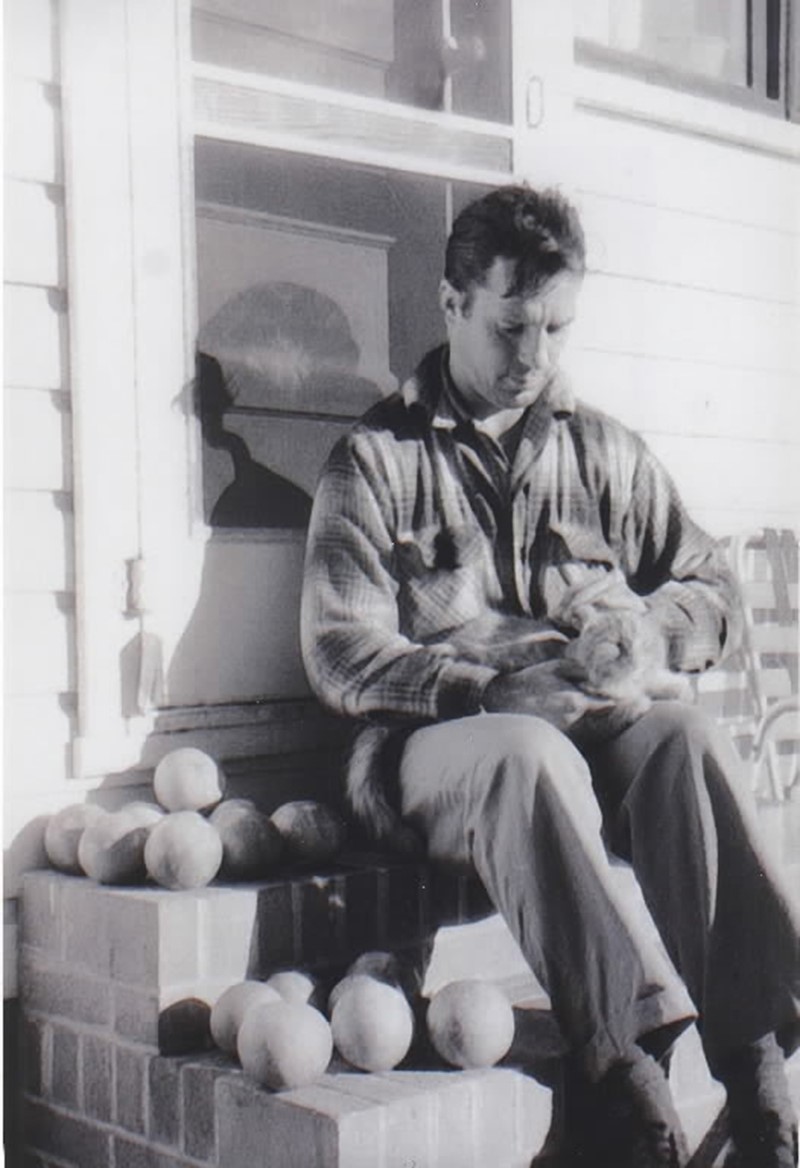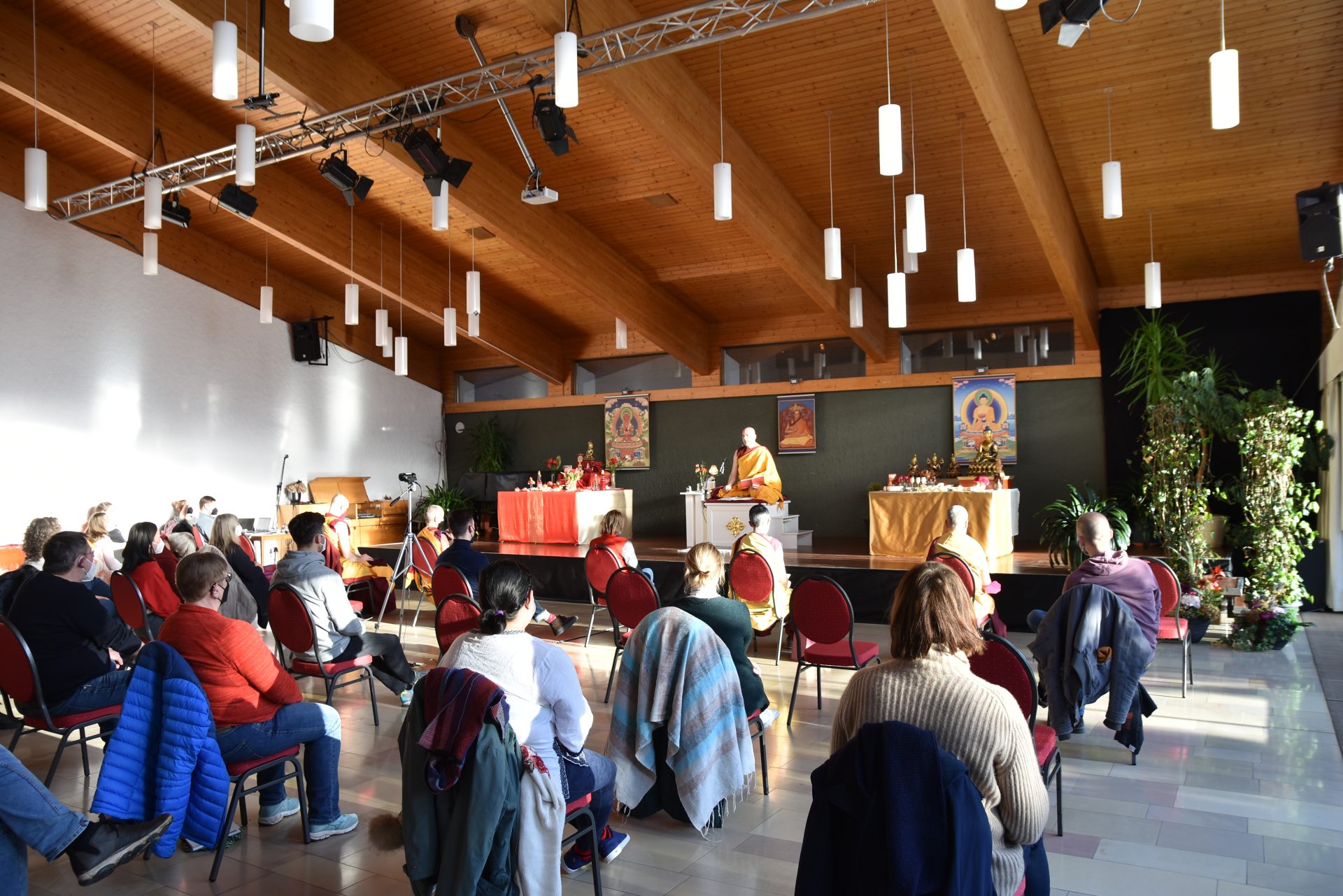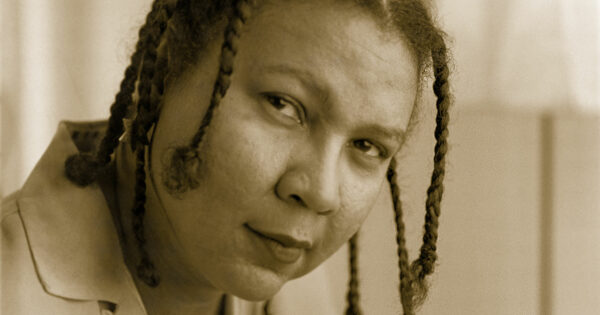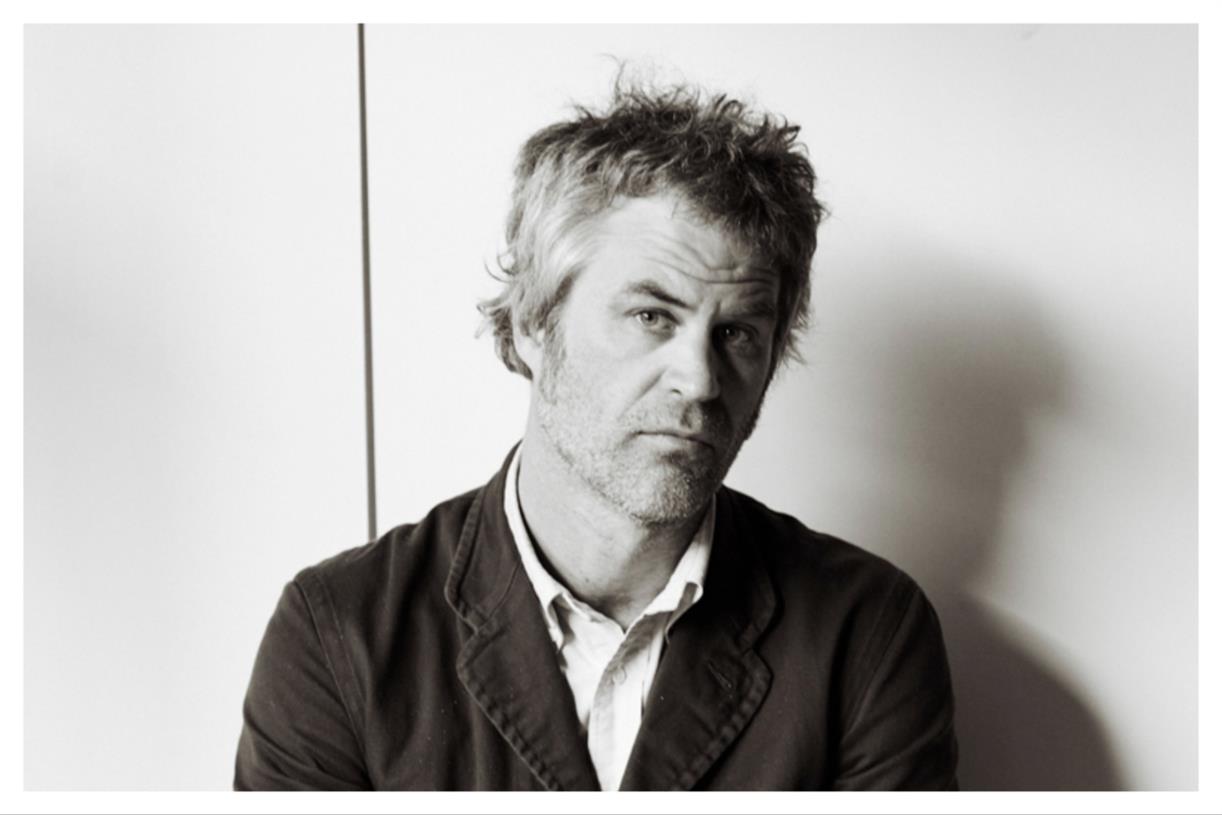The Dharma of Jack Kerouac
In an excerpt from his latest book, author Randy Rosenthal explores the bombastic quasi-Buddhist stylings of the Beat Generation icon. The post The Dharma of Jack Kerouac appeared first on Tricycle: The Buddhist Review.

Jack Kerouac’s two most popular books—On the Road and The Dharma Bums—showed people they could live a completely different way of life: a bohemian existence at odds with postwar American consumerism. Both books are about freedom. Both depict a life free from thirty-year mortgages, nine-to-five jobs, conventional relationships, and family responsibilities. They present the liberating idea that you could do whatever you want with your life—what you want to do, not just what you were supposed to do. For many readers, this idea was profound.
Yet despite their similarities, the books are quite different. Stylistically, On the Road is far superior. When reading it out loud, the prose sounds like poetry. It has the spontaneous shifting rhythms of jazz, with the words tumbling forth like a roller coaster, rising and falling in a mesmerizing flow. Some passages are truly ecstatic, in the transcendent sense. But for the most part, the language of The Dharma Bums is flat, perhaps too spontaneous, perhaps even too contrived. Either way, it doesn’t have that magic.
Yet for the purpose of influence, this doesn’t matter. Just as On the Road set countless young people off to a freewheeling life of hitchhiking, train hopping, and overall dropping out, The Dharma Bums inspired many to become the sort of wandering religious pilgrims unaccepted in the West. More importantly, it brought Buddhism to the mainstream, whereas it was previously the obscure interest of scholars and beatniks. (For instance, around a year after the book was published, a group of young men wearing matching jackets with the words “DHARMA BUMS” written across the back showed up at Kerouac’s house in Northport, Long Island.) Essentially a book of Buddhist propaganda, The Dharma Bums arguably turned more people on to the religion than any other work of American fiction.
But Kerouac is all energy and attitude, not depth, and many of the misconceptions we have about Buddhism today are due to his flawed presentation. His friend Locke McCorkle, who studied with the philosopher Alan Watts at the American Academy of Asian Studies and served as the model for The Dharma Bums character Sean Monahan, later said that though Kerouac’s “intuitions were right,” he “made up his Buddhism” and “didn’t know a lot about it, didn’t have a lot of training in it.” Watts himself said Kerouac had “Zen flesh but no Zen bones.” Poet, essayist, and translator Kenneth Rexroth said “Kerouac’s Buddha is a dime-store incense burner.” (Both Watts and Rexroth have characters based on them in The Dharma Bums.) During a meeting with D. T. Suzuki, Kerouac felt the famous Zen teacher and translator was looking at him as if he were “a monstrous imposter.”
Perhaps this harsh dismissal of his work by leading Buddhist scholars is why Kerouac eventually gave up on Buddhism, turning back to Catholicism, and alcoholism, before dying of a cirrhosis-caused hemorrhage at age forty-seven, in 1969. We see the seeds of this fate beginning to sprout in The Dharma Bums. About a third of the way through the book, Kerouac’s alter ego mentions his “recent years of drinking and disappointment.” What he’s referring to is his stalled literary career.
After getting accepted to Columbia on a football scholarship, Kerouac dropped out in 1942. He worked for the Merchant Marines during the Second World War, never seeing combat. All the while and afterward, Kerouac lived the bohemian life, tracing and retracing a big triangle between New York, San Francisco, and Mexico City. He was writing constantly, and in 1950 “John Kerouac” published his first book, The Town and the City. It’s a traditional type of novel, longer than anything else he wrote, and based on his experiences growing up in Lowell, Massachusetts, and his transition to New York City, where he met a circle of eccentric friends he’d later call the Beat Generation. At twenty-eight, Kerouac thought he’d made it.
Then came the disappointment. The novel didn’t sell. Worse, no house would publish his second novel. Halfway to the jazz-inspired epiphany of “writing spontaneously,” Kerouac typed this book on one 120-foot-long scroll over the course of twenty days, high on Benzedrine. A single 120,000 word paragraph, the novel was about his experiences during 1947–50, taking road trips with Denver-raised delinquent Neal Cassady, the model for the book’s antihero, Dean Moriarty. Kerouac called it On the Road. He took the scroll to Roger Giroux, his editor at Harcourt Brace who had bought The Town and the City. Giroux rejected it immediately.
For six years, Kerouac continued to receive rejections. No one would touch it, particularly because of the book’s depictions of drug use and sexual promiscuity. He became disappointed. But he continued to write. After finishing On the Road in 1951, Kerouac wrote The Subterraneans, Doctor Sax, Maggie Cassidy, Visions of Cody, Visions of Gerard, and Tristessa, all of which would remain unpublished for years. He also married and divorced, twice. In the second marriage, he fathered a daughter he refused to recognize as his own, mainly for fear of having to make child support payments. So there was failure in literature, failure in love, and moral failure. During these years, he developed his drinking habit—a habit that often accompanies disappointment—but he also became interested in Buddhism.
In 1954, while staying with Neal and Carolyn Cassady at their home in Los Gatos, California, Kerouac found Dwight Goddard’s A Buddhist Bible in the San Jose Public Library. Originally published in 1932, this nearly seven hundred-page book gave Kerouac a foundational knowledge of Buddhist concepts—from dharma to karma to maya to the cyclical idea of the universe. He dove into it. Friends recall him carrying the book around wherever he went. He didn’t have a guide or teacher, but he felt he could intuitively digest the ideas of Buddhism on his own. Over the following two years, he wrote a sprawling book of Buddhist notes called Some of the Dharma, which began as letters aiming to teach Allen Ginsberg about Buddhism. Kerouac also wrote a biography of the historical Gotama Buddha, titled Wake Up: A Life of the Buddha. (Both books were published posthumously.) These works show his serious interest in Buddhism, an interest that quickly overwhelmed everything else in his life.
For instance, in January 1955 Kerouac wrote his new agent, Stanley Colbert at Sterling Lord, saying, “I think the time has come for me to pull my manuscripts back and forget publishing.” He wanted all his projects returned, including On the Road, which he was then pitching as “The Beat Generation.” He claimed that being unable to publish “worked out fine,” because from then on, all his writing was “going to have a basis of Buddhist Teaching free of all worldly and literary motives.” He said he could only have published “Beat G.” as a “Pre-enlightenment work.” Some of the Dharma grew to over two hundred pages, and spreading the Buddhist Word became Kerouac’s main focus. In a letter to his sister, he wrote: “I intend to be the greatest writer in the world and then in the name of Buddha I shall convert thousands, maybe millions.” Among editors, there was little interest in his Buddhist writings. But his passion only deepened after becoming friends with Gary Snyder, the poet, scholar, and translator studying Asian culture and languages as a grad student at Berkeley, where Kerouac lived with Ginsberg in late 1955. Snyder was able to read Chinese and Japanese Buddhist texts in their original languages, and Kerouac loved learning from him, especially about Buddhist lore. Snyder quickly replaced Neal Cassady as Kerouac’s new hero. Following Snyder’s advice, Kerouac became a fire lookout on Desolation Peak in the Cascades—the only book he brought with him was the Diamond Sutra, one of the most influential Mahayana Buddhist texts.
“I intend to be the greatest writer in the world and then in the name of Buddha I shall convert thousands, maybe millions.”
Everything changed in late 1956, after he came down from the mountains. With the help of editor and critic Malcolm Cowley, Kerouac was able to publish excerpts of “The Beat Generation” in the literary magazines New World Writing and The Paris Review. With this push—and the publicity that followed Ginsberg’s success with his poem “Howl,” which was dedicated to “Jack Kerouac, new Buddha of American prose”—the time for Kerouac became ripe. Finally, after many revisions to the original manuscript, Viking accepted On the Road, publishing it in the fall of 1957. Within a few weeks, The New York Times hailed Kerouac as the voice of a new generation. He became famous overnight. He was on the radio. He was on television. He was in the newspaper. He made appearances at campuses. And he quickly became uncomfortable with fame.
By then, he was thirty-five. His twenty-one-year-old girlfriend at the time, Joyce Glassman, recalls this tumultuous period of Kerouac’s sudden celebrity status, saying, “I felt this kind of anger in people. They were fascinated by him. They also thought he was very threatening. They hated him. All the men wanted to fight him. All the women wanted to fuck him, not in a nice way, but in an aggressive way.” Interviewers were hostile, as if Kerouac were the despicable Dean Moriarty himself. When Kerouac went out at night in Greenwich Village, he’d get drunk and obnoxious. Men would recognize him and try to beat him up. Once, he was beaten quite badly, his head smashed against a curb. He needed to get away. And despite his fame, Viking didn’t want any of his unpublished novels. They wanted him to write another book like On the Road. So Kerouac retreated from the public eye to his sister’s house in Orlando, Florida, where he wrote The Dharma Bums in less than two weeks.
In this time of turmoil—before his drinking habit turned to outright alcoholism, and after his years of wandering and creative fury—he wrote about what was perhaps the happiest time in his life. The Dharma Bums chronicles his adventures with Gary Snyder, Ginsberg, and other Bay Area poets on the West Coast during 1955 and 1956—the time immediately before On the Road was published. As his friend John Clellon Holmes said, Kerouac’s fame “so discombobulated him that for the rest of his life he never, never got his needle back on true north.”
Indeed, by the time The Dharma Bums was published, in 1958, Snyder was living in Japan with fellow Beat and soon-to-be-Zen monk Philip Whalen, who invited Kerouac to join them. Kerouac wrote back that he’d be too embarrassed for them to see him, admitting, “I’ve become so decadent and drunk and don’t give a shit. I’m not a Buddhist anymore.” But by then it was too late. The Dharma Bums was already on the way to converting thousands, maybe millions of readers—or at least leading them to the Buddha’s path, as it did to me.
♦

This article was excerpted and adapted from The Orient Express by Randy Rosenthal, republished with permission from Cascade Books, an imprint of WIPF and STOCK Publishers. © 2024. For more Jack Kerouac, be sure to check out Tricycle’s recently resurfaced Wake Up: A Life of the Buddha, the author’s 1955 biography of Siddhartha Gautama, originally serialized from 1993–95.

 ValVades
ValVades 
































